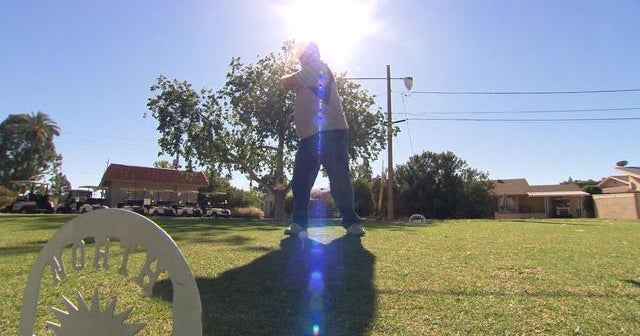I have a confession to make: even though I write about health for a living and I know how important physical activity is for our health, much of my working life has been spent sitting down.
Research suggests that over the course of 24 hours there is a “Goldilocks” or “just right” amount of time for sitting, sleeping, standing and moving. In fact, at the end of this year, new physical activity guidelines will be released in Australia with a 24-hour emphasis that considers the mix of the five Ss (sleeping, sitting, stepping, sweating and strengthening) probably echoing those in Canada.

We all know we should move more, but it doesn’t always mean we do it.Credit: Getty Images
The “just right” amounts for our cardiometabolic health is 8½ hours of sleep; no more than six hours sitting; about five hours standing; two hours of light intensity activity; and another two hours of moderate intensity activity.
Yeah, right.
The average Australian sits for nine or 10 hours a day, sleeps for about seven hours, and does 30 minutes, not two hours, of moderate intensity activity.
Like many people, I find getting it “just right” a real struggle.
Especially because I’m someone who once thought if I couldn’t fit in a “proper” workout, it wasn’t worth doing anything. When I did manage to fit it in, I would still spend the rest of the day chained to my desk.
I was what researchers call an “active couch potato”.
And on some days, I didn’t get out at all. There was just too much on and getting out for even 15 or 20 minutes felt like a guilty luxury I couldn’t afford. Even if I could spare 15 minutes, what was the point?
I now know better. There were three things that changed my mind.
Loading
The first was necessity.
I have a seven-year-old and a five-year-old. When they were born, I’d have been grateful for 15 or 20 minutes to exercise.
If I was going to stay sane and maintain some semblance of health and fitness, I quickly realised that I’d have to change my perception of what was worthwhile.
The second was knowledge.
I’ve been writing about health and fitness at The Sydney Morning Herald and The Age for about 14 years now. During that time, a body of research has emerged challenging the idea that physical activity has to be long – or structured – to be effective.
Some of the findings that stood out to me were:
- The idea of exercise snacks where we could get bang for buck with just a few minutes of intense exercise. Earlier this year a study found that about five minutes of vigorous intensity, incidental activity every day related to a reduced risk of a serious heart event or death by as much as 38 per cent.
- The understanding that exercise, in any way, shape or form, is integral to mood, mental health and good sleep.
- The knowledge that sitting all day every day is damaging, and is not offset by getting a “proper” workout in.
- And then the appreciation that there is value in incidental activity, and that there is an incremental benefit. Even if we can’t do structured exercise, all the bits of movement we do throughout the day add up. Especially if we incorporate a little huffing and puffing.
And what helped me to overcome the guilt of taking a lunch break on work days to go for a walk or to exercise was research finding that exercise improves our cognitive function at work, including attention, working memory and problem-solving.
There are also studies that show acute bursts of vigorous activity lower the markers of stress – things like blood pressure, cortisol levels, heart rate – and enable us to cope better with external stressors.

Drop the guilt and get out for regular, short breaks.Credit: Getty Images/iStockphoto
The final change for me was applying these findings. I made small shifts to my routine.
In practice, it looks a little like this:
- I do about 10 or 15 minutes of yoga when I wake up to stretch out and move my body.
- I get out for fresh air every day. When I’m at home, if I can’t get out for a 30-minute run, I’ll sprint up a nearby hill or a flight of stairs a couple of times – done and dusted in less than 15 minutes. When I can, I walk to pick up my kids from school.
- At work, I get up from my desk regularly to make a cup of tea or refill my water (I’ve taken to using a smaller glass, so I have to get up more regularly to refill it), I try to go for a walk at lunch and, on my way home, I often choose a bus stop that is further away to walk to.
- I regularly practise mindful breathing while I’m sitting at my desk, and take moments to stand up and look up from my computer.
- I still aim for longer workouts at the weekend and one or two days during the week, but on the days I can’t, I still get the instant mood lift from movement and I know that my brain fires better when I take regular short breaks. In fact, I find that taking a break creates the space for ideas to crystallise. I often don’t write articles at my desk but in my head while I’m walking.
I’ve learnt that my brain will take breaks even if my body doesn’t and by 2 or 3pm my brain starts to feel foggy, and I’m there, but not there, for the rest of the day.
Of course, there are days when none of this happens, so instead of perfect or even “just right”, I aim for “good enough”. And good enough takes some of the pressure off so that it becomes more of a pleasure than an obligation.
So even if we don’t always get it just right, my take home for good enough is that every moment of movement counts.
Make the most of your health, relationships, fitness and nutrition with our Live Well newsletter. Get it in your inbox every Monday.
Most Viewed in Lifestyle
Loading


















































